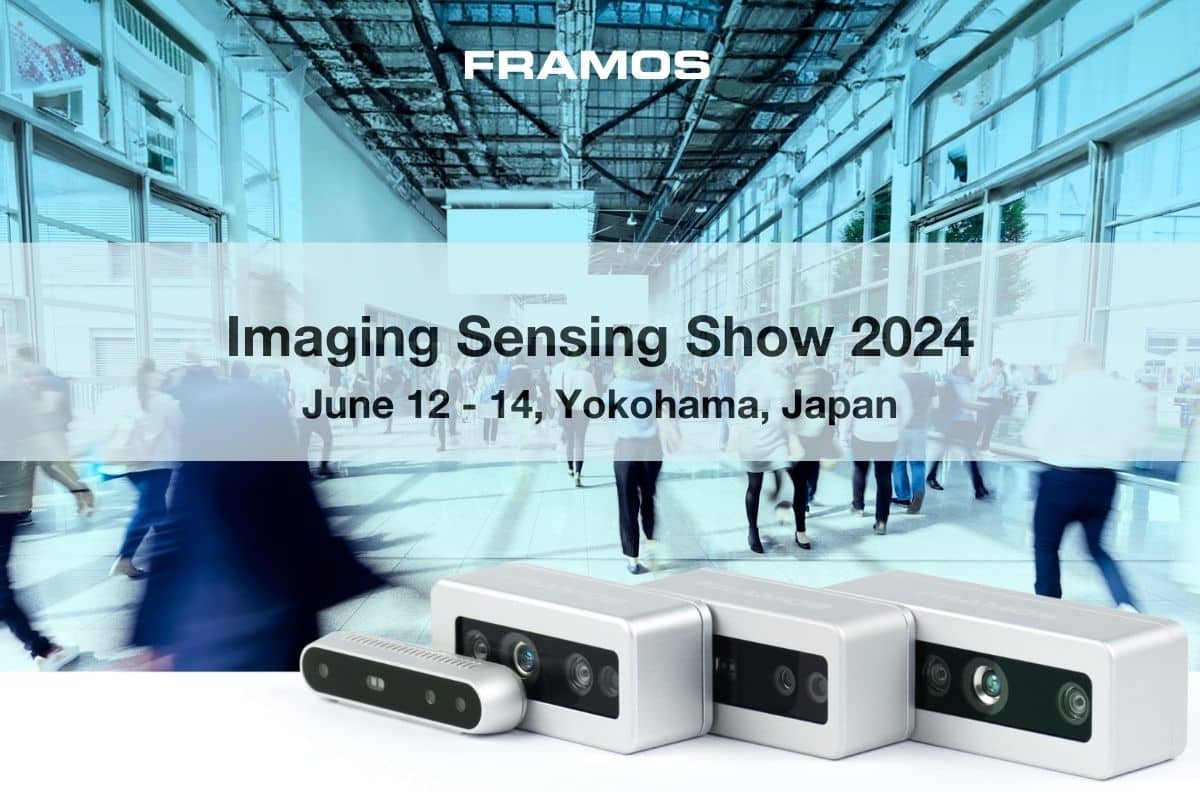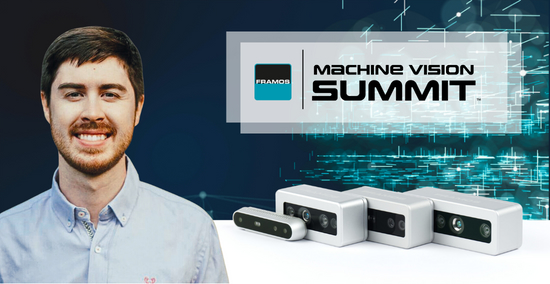As the digital landscape continues evolving, organizations increasingly turn to machine and embedded vision systems to gain a competitive advantage. But how can the return on investment (ROI) for such transformative technologies be quantified? And what are the best strategies for overcoming the usual hurdles to implementation? These are just some of the questions we will explore in our upcoming webcast, “Building a Business Case for Vision: Quantifying ROI and Overcoming Implementation Challenges” on Wednesday, November 13 at 3:00 p.m. GMT (4:00 p.m. CET).
Why attend?
Hosted by Imaging & Machine Vision Europe, this FRAMOS-sponsored panel brings together three leading machine vision industry experts to provide you with key insights into the world of machine vision technology:
- Dr. Frederik Schönebeck – Director of Growth, FRAMOS
- Mark Williamson – Machine Vision Business Consultant
- Paul Wilson – CEO, Scorpio Vision
These experts will explore the transformative impact of machine vision systems, covering everything from performance enhancements to cost savings.
What you’ll learn?
This webcast will provide you with actionable insights on creating a robust business case for implementing or scaling machine vision systems for your organization. Key topics include:
- Financial and Performance Benefits: Learn how to optimize, reduce costs, and increase revenue growth by introducing machine and embedded vision technologies into your operations. Whether you are looking to integrate these systems for the first time or scale existing solutions, the panel will provide real-world examples of tangible ROI.
- Identifying high-impact opportunities: Where can vision systems create the most value in your organization? Learn how to identify areas of your operation that will benefit most from vision system integration.
- Overcoming Implementation Barriers: Implementation is one of the biggest challenges for companies adopting new technologies. The panel will provide insights into effectively overcoming these barriers, from system integration to managing data quality.
- Training staff and managing change: Vision systems are only as effective as those operating them. We will discuss the critical role that staff readiness, training, and change management play in successfully adopting these technologies. Learn how to prepare your workforce to realize the potential of vision systems fully.
Who should attend?
If you are a business leader, operations manager, or technology strategist looking to increase productivity through cutting-edge technology, this webcast is for you. It will be precious to those working in industries such as industrial automation, smart agriculture, or those creating digital twins, as well as others who can and want to adopt machine vision technology quickly.
Don’t miss this opportunity to learn from our experts and better understand how to overcome implementation challenges while maximizing ROI from vision systems.
Secure your place on this webcast on Wednesday, 13th November, by visiting the registration page. This is your chance to advance in the growing field of machine and embedded vision.
Expert interview: The future of machine vision technology
To give you a taste of what to expect in the webcast, we sat down with Dr. Frederik Schönebeck for a brief interview on some of the key topics that will be covered in the webcast.
- What financial benefits can companies expect from adopting machine vision?
Dr. Frederik Schönebeck: The main advantage is optimizing operations and reducing costs. Machine vision systems can automate processes that were previously done manually, resulting in shorter production times and fewer errors. This results in significant cost savings and an increase in overall efficiency. In addition, machine vision can help companies avoid downtime by detecting and correcting problems before they escalate. However, and this is a thing that is comparatively new, there are new trends emerging that are about to revolutionize traditional market solutions in various fields, such as smart-agriculture companies that create systems with vision from scratch and are therefore highly competitive because of their disruptive use of already existing technology. Vision capability is, therefore, a capability that ensures competitiveness.
- What challenges do companies often face when implementing these systems?
Dr. Frederik Schönebeck: One of the most common challenges is the complexity of integrating new systems into the existing infrastructure and selecting the appropriate vision components. It doesn’t always have to be the high-resolution or best-quality vision system. It’s always advisable to look at the environmental conditions first and then consider which solution is cost-effective and provides the desired benefits. This way, operational processes can be made more efficient without having to spend large sums of money. In addition, high-resolution systems often generate large amounts of data, and effectively managing this data can be a significant hurdle. Furthermore, employees need to be familiarized with new technologies. This requires both time and investment in training. On the other hand, if vision as a feature is planned ahead to be part of an embedded system, there are different requirements that need to be addressed correctly. This needs to be considered within the planning phase.
- How can companies determine which areas of their operations would benefit most from machine vision systems?
Dr. Frederik Schönebeck: The key is to focus on areas where automation can provide immediate added value – ideally, processes that are repetitive, prone to error, or time-consuming. A thorough operational review can help companies identify these promising opportunities. It is important to work with system integrators early on to understand the full range of possibilities that machine vision technology offers and to build the right system. This depends on the variables of each case.
- What role does employee training play in the successful implementation of machine vision systems?
Dr. Frederik Schönebeck: Training is absolutely essential. No matter how advanced the system is, it is only as good as the people operating it. Comprehensive training programs focusing on technical skills and change management ensure a smooth transition. Employees need to understand not only how to operate the system but also how to troubleshoot and optimize its use for their specific needs. People need to understand what vision can and also what vision can not do. We discuss this in more detail in our webcast.
- What future trends do you see in machine and embedded vision technology?
Dr. Frederik Schönebeck: Vision systems generally produce vast amounts of data, which typically have to be processed, compressed, and stored.
AI is lately driving major advancements in computing technology, both in hardware and software. Major drivers are consumer electronics, automotive, and data centers. But we have come to a point where a lot of the developed technology is now becoming interesting also in a more industrial context. “Computing on the edge” has become a big thing, where the data is generated and processed in real-time right on the edge device – without the need for offline processing or sending it to the cloud. The fact that this is now possible opens the door for so many new and exciting applications. And vision is one of the main drivers here, simply because it is a key enablement technology as it fundamentally mimics how humans sense and perceive the world.











